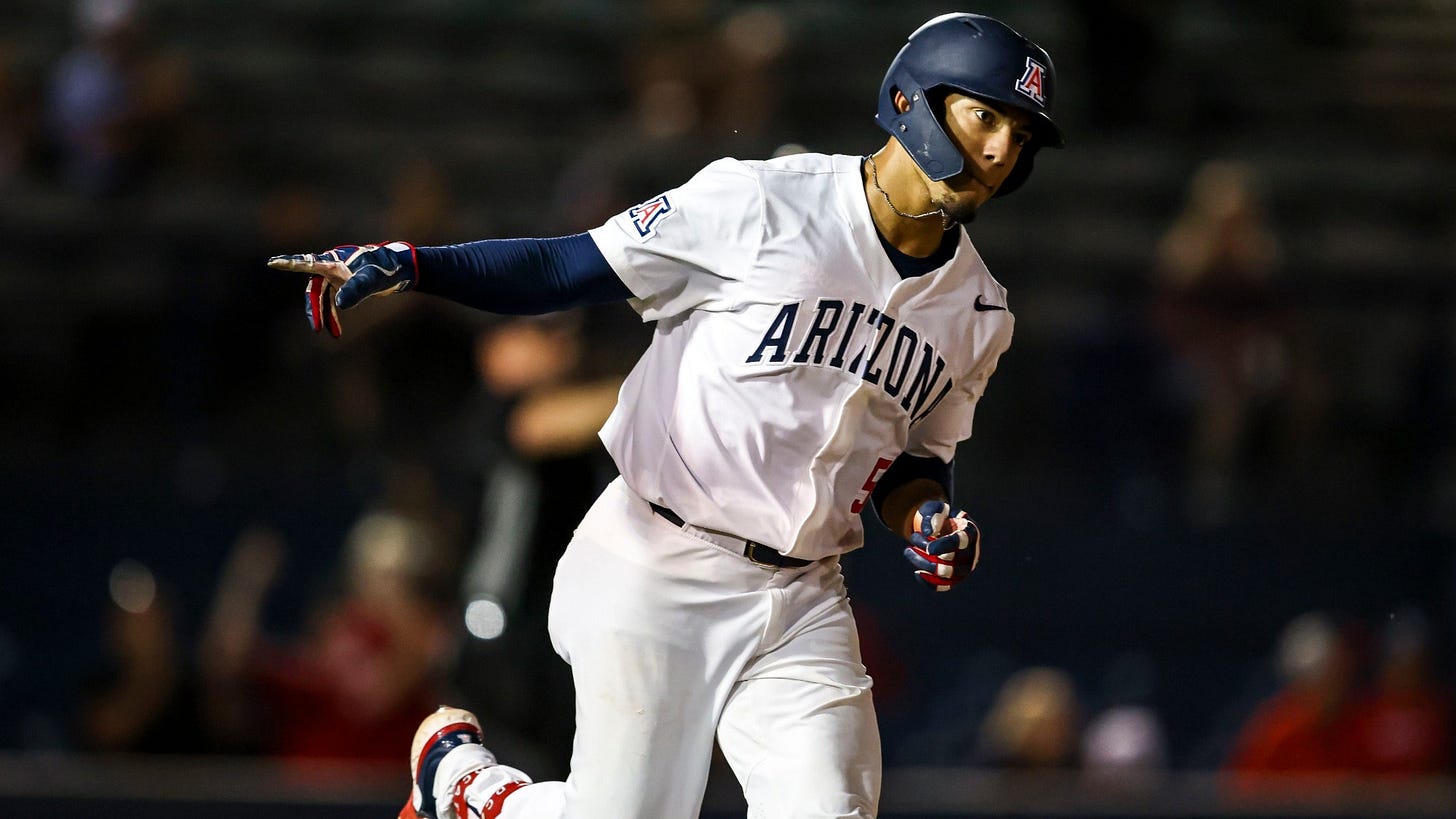My Mariners Mock Draft 1.0
A realistic, five-round mock draft
No, I’m not going to roll out a league-wide, five-round mock draft here. I’m a little nuts, but I’m not certifiably insane.
Yet.
But below I will talk through and generate a five-round scenario based on multiple draft boards, and the general consensus on players, as well as the Mariners’ recent draft history and organizational tendencies and strengths.
Let’s rock, but three notes: Below is just one way it could go …we’ll do this again right before the draft … and this isn’t necessarily an ideal scenario for Seattle, but this is a way to show the kind of haul the club could have next month.
The number range in parenthesis is about where I think the player would rank in my Mariners Prospect Rankings.
Round 1
22. Chase Davis, OF — Arizona (2-5)
Davis’ trend is a clean arrow skyward at the plate and he will enter pro ball with a shot to stay in center. He’s tooled up from both a physical and skills standpoint, led by plus power and above-average speed. Perhaps most importantly, Davis has learned to cover the zone better and make a lot of contact, all while getting the barrel to the ball more often. If he learns to punish middle-in velocity better, he’s a star.
Prospect Promotion Incentive Pick
29. George Lombard Jr., SS — Gulliver Prep (Fla.) (4-7)
The range on Lombard right now seems to be somewhere between 20 and 40, which stretches across three of Seattle’s selections. But he’s a high-upside talent who projects to at least plus power, and despite having little chance to stay at shortstop long-term, he could end up in center field where there’d be less pressure on his bat.
Competitive Balance A
30. Charlee Soto, RHP — Reborn Christian Academy (Fla.) (5-9)
Soto is a 6-foot-5, 210-pound monster with three plus pitches and the general belief his athleticism and present delivery projects at least average command and control. He’s up to 98 mph and won’t turn 18 until August. He’s not likely to move quickly right from the get-go, but Soto’s pure stuff should carry him to High-A before he runs into any developmental challenges.
Round 2
57. Joe Whitman, LHP — Kent State (7-10)
I’ve seen Whitman as high as the 30s on some boards, including one checker who thinks he’s the best bet among left-handed arms in the entire class, and as low as the mid-70s. There’s size (6-5, 200), velocity upside (has touched 95-96 mph), and a strikeout pitch in one of the better-shaped breaking balls in the draft. Whitman could follow a similar path as George Kirby, the club’s first-round pick in 2019, though he carries less upside.
Round 3
92. Carson Roccaforte, OF — Louisiana-Lafayette (10-15)
It’s likely too late for Colton Ledbetter, and even Jack Hurley, and 92 might be a bit too early for Roccaforte, based on some boards I’ve seen this week. I’d take him at No. 57, however, and feel fine. He’s a plus runner with a chance at average home-run numbers to go with center-field defense and a shot to be a nuisance on the bases. He’s a lefty stick with instincts and a self-check developmental approach to the game. Getting an average regular in the middle of the field in Round 3 would be what Chandler Bing would call a friggin’ steal.
Round 4
124. Kiefer Lord, RHP — Washington (12-15)
Lord is a three-pitch starter up to 99 mph and comfortably 93-95 deep into games, with a mid-80s slider to miss bats. It’s 45-grade command and 50 control now, but he’s athletic and repeats a clean delivery, projecting plenty of strikes to take advantage of above-average stuff. It’s basically the Bryce Miller starter kit.
Round 5
160. Zach Thornton, LHP — Grand Canyon (16-22)
Thornton is a projectable lefty who has scraped 94 mph but sits 89-91, and lacks a swing-and-miss secondary offering. But Thornton’s delivery proejcts well, he has the frame to add weight and pack on some velocity with it — remember, Kirby was 91-93 his junior year — and pitches with deception, suggesting the chance at a consistent league-average starter in the mold of Wade Miley or Alex Wood.


